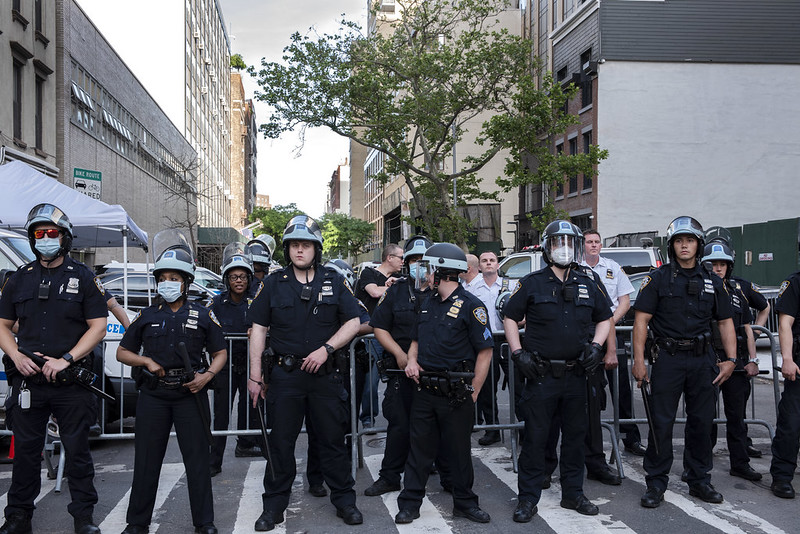Cutting the NYPD police budget by $1 billion is not enough for protesters and advocacy groups, but three criminologists from the city’s John Jay College of Criminal Justice said defunding the police is not going to be easy.
“Defunding the police is kind of one of those generic terms that means different things for different people,” said Dennis Kenney a criminal justice professor at John Jay College and a former Florida police officer. “Shutting down the NYPD would be a bit of a disaster. They’re talking about somebody else taking over the responsibilities that the police handle.”
Advocates and protesters contend that allocating funds to social services could improve mental health, addiction and homelessness in different communities, and that it is a better use of taxpayer money.
Good morning, it’s a beautiful day to defund the police pic.twitter.com/Fxyw3qcmlA
— Allyson BLM 🔜 ?? some festival eventually (@Allys0nwondrlnd) July 7, 2020
The city cuts will reduce municipal services, hirings and in response to the recent protests, take around $1 billion from the Police Department. But protesters argue Mayor Bill de Blasio is not really shifting money away from the police department amd into programs that will benefit minority communities.
For example, $400 million of the $1 billion cut will be achieved by moving school safety officers under the Department of Education. However, The New York Times reported that the Education Department already sends $300 million a year to police to fund school safety programs, according to the city’s Independent Budget Office. This means that the DOE will now operate a program it had already been underwriting. Critics say all De Blasio is doing is moving money around and now really cutting the police budget.
Some protesters are also pushing for community policing. But Kenney warns cutting down community police interactions and replacing them with neighborhood vigilantes is risky.
“If you shut down police departments, you would then have little islands where you got very different kinds of policing,” Kenney said. “For example, in the Bronx, citizen groups would do something and then in Soho other citizen groups would do different things. So you end up with this hodge podge of extreme tribalism where the rules are different when you cross the street.”
Barry Latzer, a professor of criminal justice at John Jay College, and former assistant district attorney in Brooklyn, also believes communities policing themselves could be dangerous.
“The risk of using citizens is that you have non-professionals doing what professionals do,” he said. “There are violent, armed people on the streets and I don’t think we want unprofessional citizens to interact with them. If they do, I think we would have more incidents of shooting and use of force.”
Another challenge with implementing changes to policing is the hyper-localized nature of police departments across the U.S.
“The challenge with saying, ‘We’ll just put programs in place and reform American policing’ is that reforming 18,000 agencies is a tough task. Reforming one agency is already a tough task,” said Eric Piza, an associate professor at John Jay College, and former GIS specialist of the New Jersey Police Department.
Piza agreed that defunding the police is feasible as long as it is done strategically and gradually. For instance, programs and organizations that will take on mental health or drug overdose calls would have to be prepared to respond to calls on a 24/7 basis as police departments currently do.
“If we’re going to take mental health funding away from the police, but not give that money to another agency to make up for the loss of policing that problem, then that’s a problem that probably won’t get any better,” he said.
Kenney doesn’t think defunding the police is not a viable answer, even if each department is hyper-localized. He believes the services police provide now would have to be provided in through citizen community groups and organizations. Reforms would need to happen on a “neighborhood by neighborhood basis.” Knowing why policing is not effective in certain communities will be key.
“We know collaboration between them (the police) and the community members is the key, “ he said. “There are 18,000 police departments and 18,000 versions are gonna have to happen.”


